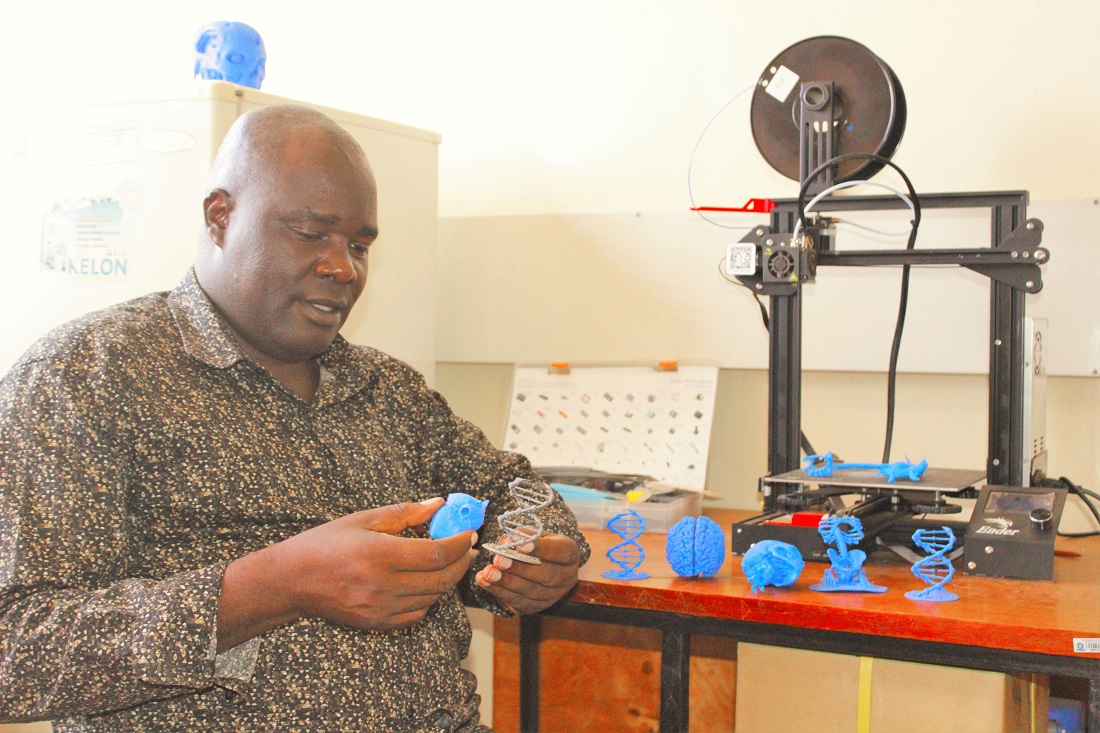
MMUST fully installs prestigious state of the art 3D Printing Machine
All this has resulted from the collaborative effort in proposal writing by Dr. Patrick Okoth and Dr. Kollenberg Mario, with a team from Germany, represented by Prof. Dictmas Wilkarski and Prof. Thomas Schrader. Dr. Okoth says that 3D prototyping was inspired by his desire to produce a successful student who is perpetually curious, intellectually brave, and a critical thinker with a thirst for technical knowledge. “This machine is very crucial, not only in our Computational and Bioinformatics lab, but to other departments like Engineering, Mathematics and Medicine. The 3D Prototyping has the power to engender a new generation of innovators with tremendous influence on the learner, laying a foundation for robust thinking, and pioneering cutting-edge advancements in basic science and medical research” said Dr. Okoth. “There has been a broad consensus that inquiry based instruction can radically transform higher education, especially where technology is blended into data manipulation as an important tool in inquiry-based instruction” he added.
While checking on the functioning of the machine, Prof. Wilkarski and Prof. Schrader said that the presence of this printer in MMUST will help boost student understanding and improve their practical skills. They said this is a rare machine, being the third one introduced in Kenya. One area that has taken center stage for a long time in the higher learning training style in Kenya has been hands on skill training where students are given practical based knowledge. The advent of 3D Prototyping in MMUST is a big stride towards achieving this teaching style. This means MMUST students will have an opportunity to print tangible objects which they can see and touch as compared to what has been happening previously. The presence of the 3D prototyping machine also means that going forward, MMUST students will have prototyped learning materials which will simplify the cost of acquisition. It is anticipated that shared techniques and skills in 3D prototyping will result in a paradigm shift from the traditional reductionist method of teaching through books and theories, to a more practical mode of learning which will encourage innovation. According to research, learners prefer to learn through visual aids. This therefore comes as a major boost to the pedagogical style in MMUST.
By Shiundu Wilberforce (This email address is being protected from spambots. You need JavaScript enabled to view it.)




